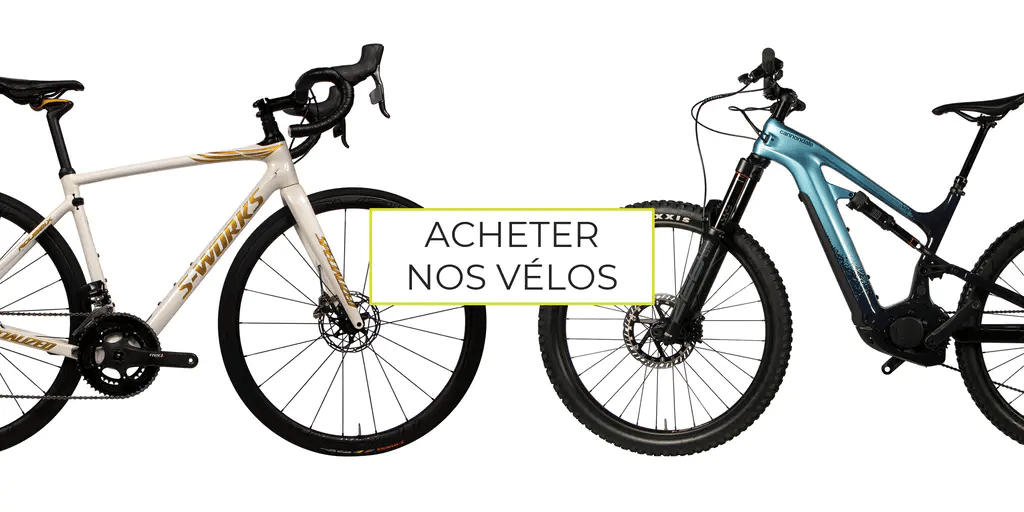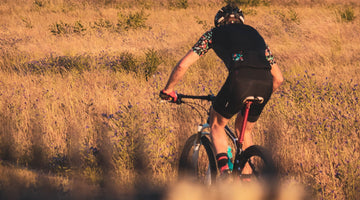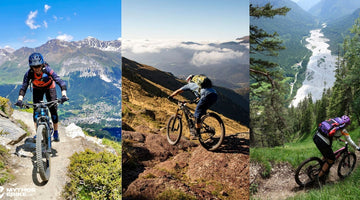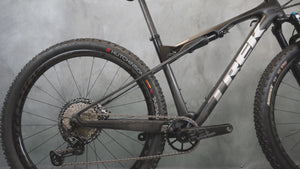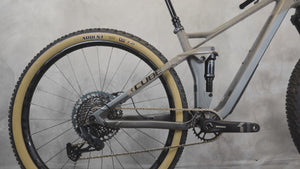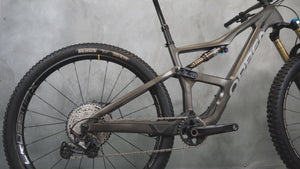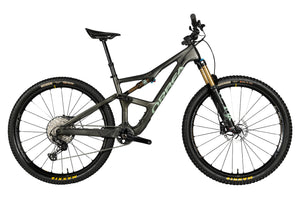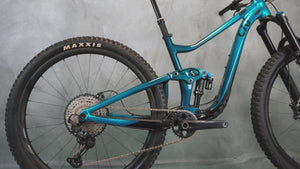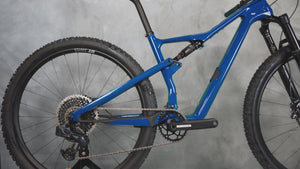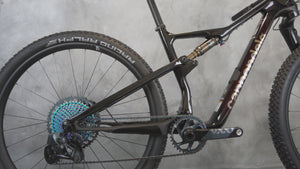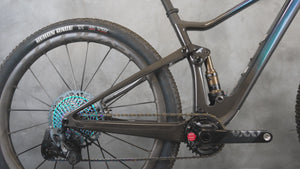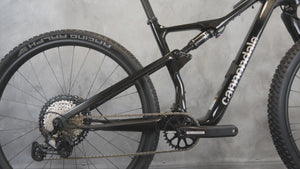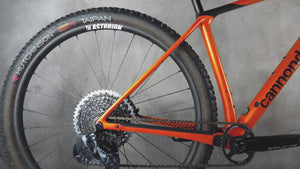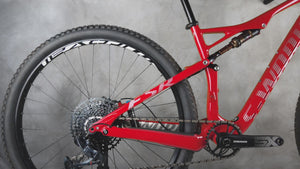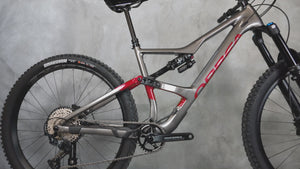Full-suspension or Hardtail mountain bike: how do you choose?
In this Article
Published on March 7, 2024
You are about to acquire a new bike, but you are facing the big dilemma of full suspension or hardtail MTB? That's perfectly normal. Between the first model appreciated for its comfort and grip and the second for its lightness and responsiveness, it is not always easy to make a choice. How do you know which one is best suited to your needs, your riding style, but also to your budget? Whether you are a passionate beginner or an experienced mountain biker, The Cyclist House helps you choose the MTB that suits you best.

What is a Full Suspension MTB?
Full suspension MTBs are equipped with both a telescopic fork at the front and a shock absorber at the rear. The latter plays a crucial role in improving traction and bike control, while offering increased comfort to the rider.
Full Suspension MTB: Which Terrains are Suitable?
Full suspension MTBs outperform hardtails on rough terrains, thanks in particular to the traction offered by their rear suspension. On this type of terrain, the shock absorber helps the tires to maintain contact with the ground, thereby improving grip, while a hardtail bounces off obstacles, which can lead to loss of grip.
In rough areas with roots or rocks, full suspensions effectively absorb shocks through the handlebars and pedals, offering superior comfort that reduces fatigue, whether in racing or during long distances.
The flexibility of the rear triangle of full suspensions allows for a greater margin of error, offering better traction, increased control, and improved directional responsiveness, while reducing the risk of accidents on rough terrain.
Confidence is a crucial element in MTB riding, especially for beginners. Full suspensions, due to their ability to forgive minor mistakes, reduce incidents that could hinder the cyclist's progression.
In short, this bike is ideal for All-Mountain riding or XC Marathon races with a travel of 130 to 150 mm to be versatile in both climbing and descending.
👉 By the way, here's a quick reminder of our favorite selection of XC and All-Mountain MTBs
Advantages and Disadvantages of Full Suspension MTB
- The bike is equipped with front and rear suspension which provides comfort and responsiveness. It also allows you to correct piloting errors when you are starting out.
- Consequently, the bike is easier to handle for the cyclist.
- While the rear wheel of a hardtail tends to slip on rough terrains, the full suspension MTB is a true all-rounder.
And its disadvantages:
- The price. Naturally, a well-equipped bike is also more expensive. So the question you need to ask yourself is: high-end hardtail, entry-level full suspension, or their refurbished versions between 30 and 60% cheaper?
- The weight displaying 3 kg more on average.
- The full suspension requires more meticulous maintenance. Composed of a shock absorber, a link, axles, and especially bearings that need to be changed regularly, this can sometimes be more expensive when it comes to changing components.

And what about the Hardtail MTB?
The term "hardtail" refers to a bike equipped with a telescopic fork, but whose frame, without a shock absorber, remains rigid. Although they are intended for off-road use, just like their full suspension counterparts, hardtails are generally less expensive and lighter. So don't underestimate the many advantages that the hardtail can offer you, and it's not Pauline Ferrand-Prévot who will tell you otherwise, XCO world champion and the only one in the race on a...hardtail!
Types of Terrains Suitable for Hardtail MTB
Aluminum or carbon hardtail MTBs are ideal for hiking or cross-country. They are very comfortable on forest paths and rolling trails. On less technical terrains, they often offer a more direct ride. Their rigid rear triangle ensures optimal power transfer during climbs and sprints.
These bikes allow cyclists to feel more connected to the terrain. Thanks to their responsiveness, they allow efficient pumping on undulating sections to gain speed. Some even claim that hardtails make better riders because they require increased anticipation of direction changes and greater precision in corners, without the extra comfort of full suspensions.
However, be aware that for longer outings, you will inevitably have to turn to full suspension.
Advantages and Disadvantages of Hardtail MTB
- Weight: most hardtail MTBs are lighter and therefore more efficient on fast terrains. A bare carbon frame will weigh about 850 grams compared to 1.9 kg for a full suspension MTB. This means less effort, faster accelerations, and easier climbs. For high-level competitors, the low weight of hardtails is crucial. On average, they are about 3 kg lighter compared to full suspensions, which can make a difference in terms of performance during climbs.
- Price: a hardtail MTB will often be cheaper at the same level of equipment and range as a full suspension MTB. For example, with the Trek SuperCaliber at €6,100 (or €3,799 in refurbished version 😊) vs. €4,300 for the hardtail version. Quality hardtails start at around €1,300, with prices varying depending on equipment and frame material. Quality full suspension MTBs, on the other hand, generally start at around €2,200, making budget a decisive factor. Opting for a quality hardtail is often preferable to choosing a full suspension with less performant equipment. Moreover, they require less maintenance due to the simplicity of their design, with fewer moving parts to maintain.
- The fun aspect of this bike brings very different sensations. Since there is no rear suspension effect, there is no need to ride hard to have fun.
- Robustness thanks to a frame often made in one piece.
And its disadvantages:
- Handling: the hardtail is more demanding. This can be motivating or discouraging especially on technical terrains.
- Less comfortable because it only benefits from a single front suspension. For cyclists suffering from back pain, this model is not ideal.

Full Suspension or Hardtail MTB: So Which One to Choose in the End?
The choice between a full suspension MTB and a hardtail MTB depends essentially on three factors: the type of terrain you plan to ride on, your riding style, and your budget.
Riding Terrain
If you plan to ride on very rough terrains, with lots of roots, rocks, and technical descents, a full suspension MTB could offer a more comfortable ride and better traction, thanks to its front and rear suspensions. For flatter or less rough terrains, a hardtail MTB may be more efficient, as it offers better pedaling efficiency and a more direct road feel.
Riding Style
If you enjoy jumps, fast and aggressive descents, the full suspension MTB will absorb shocks better and offer a more stable ride. If you prefer a more dynamic ride, with better power transmission during pedaling and a more "connected" feel to the terrain, a hardtail MTB may be preferable.
Budget
If your budget is limited, a hardtail MTB may be a more economical choice while still offering solid performance.
If you have any doubts, our team is at your disposal to guide you and offer you the bike that best suits your expectations. And when you find the ideal MTB, never forget to go out equipped 😉
In summary, the choice between full suspension and hardtail MTB will depend on your desires and goals. Also, make sure to try out different models to find the one that best suits your riding style and personal preferences. At The Cyclist House, you have a 30-day trial period, satisfaction guaranteed.
Do you have a soft spot for electric assistance? Do you want to go faster and further? The Cyclist House offers you a small selection of the best E-MTB models on the market between 30 and 60% cheaper compared to a new model. Satisfaction guaranteed 🙂

